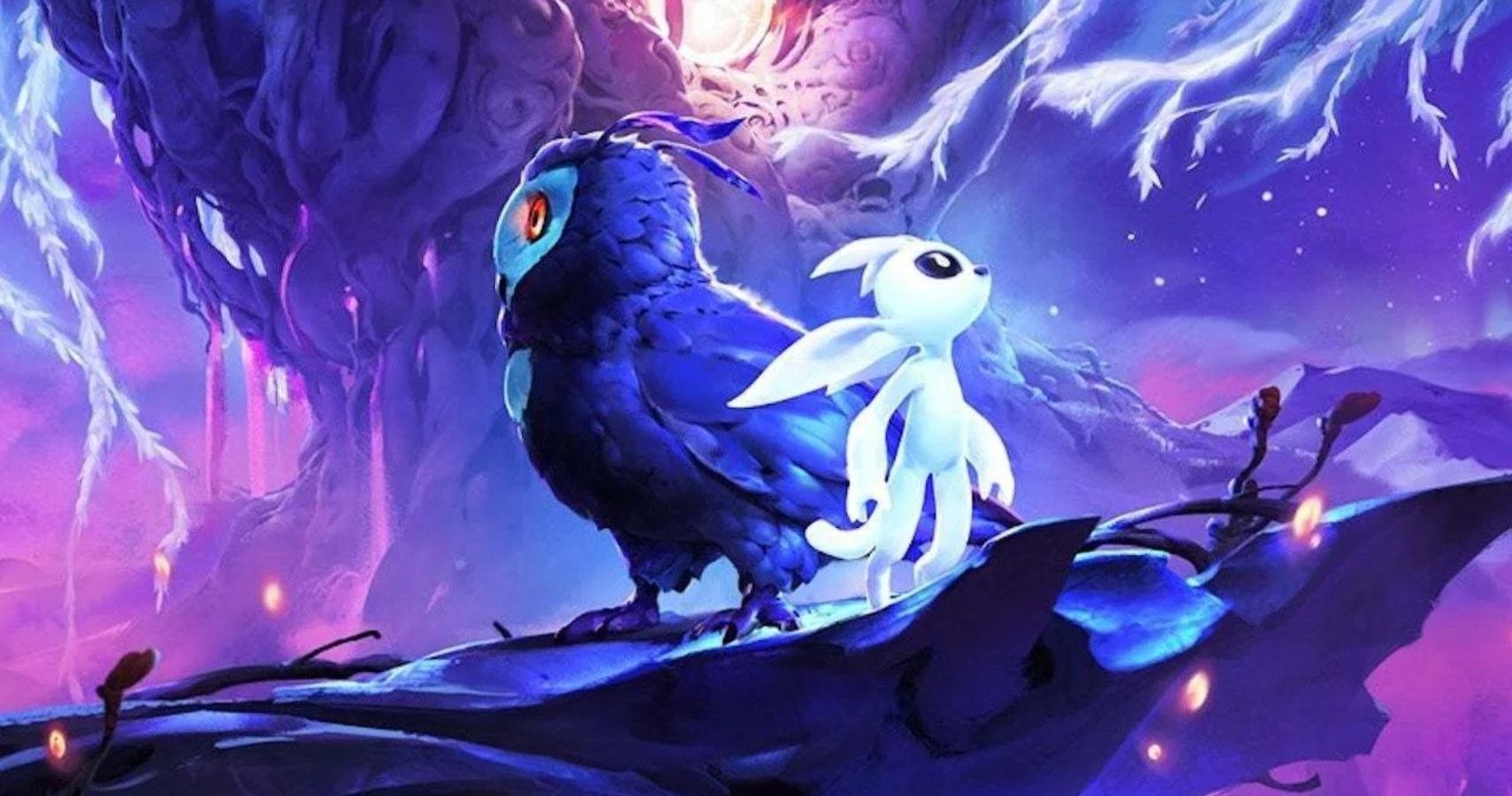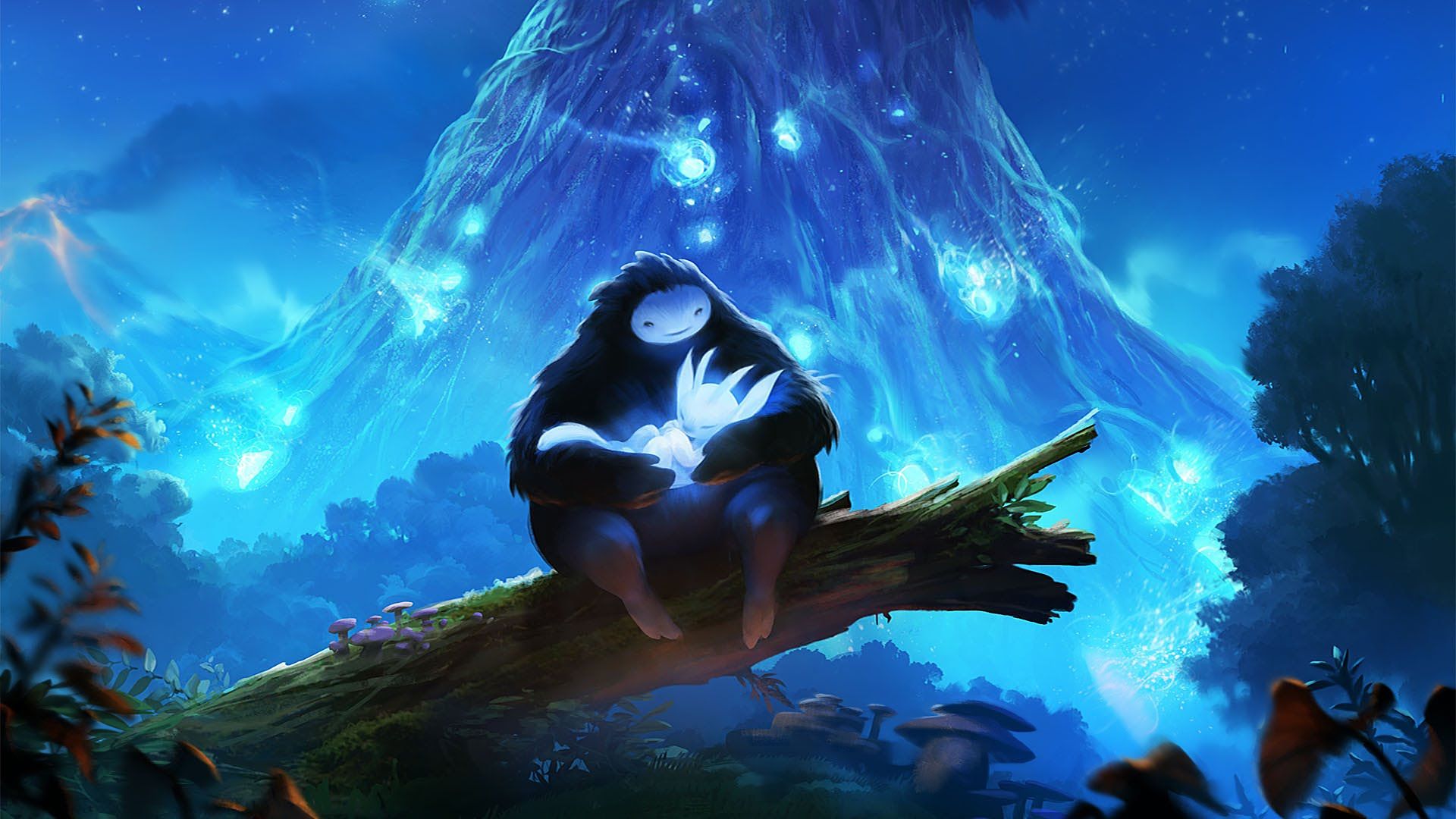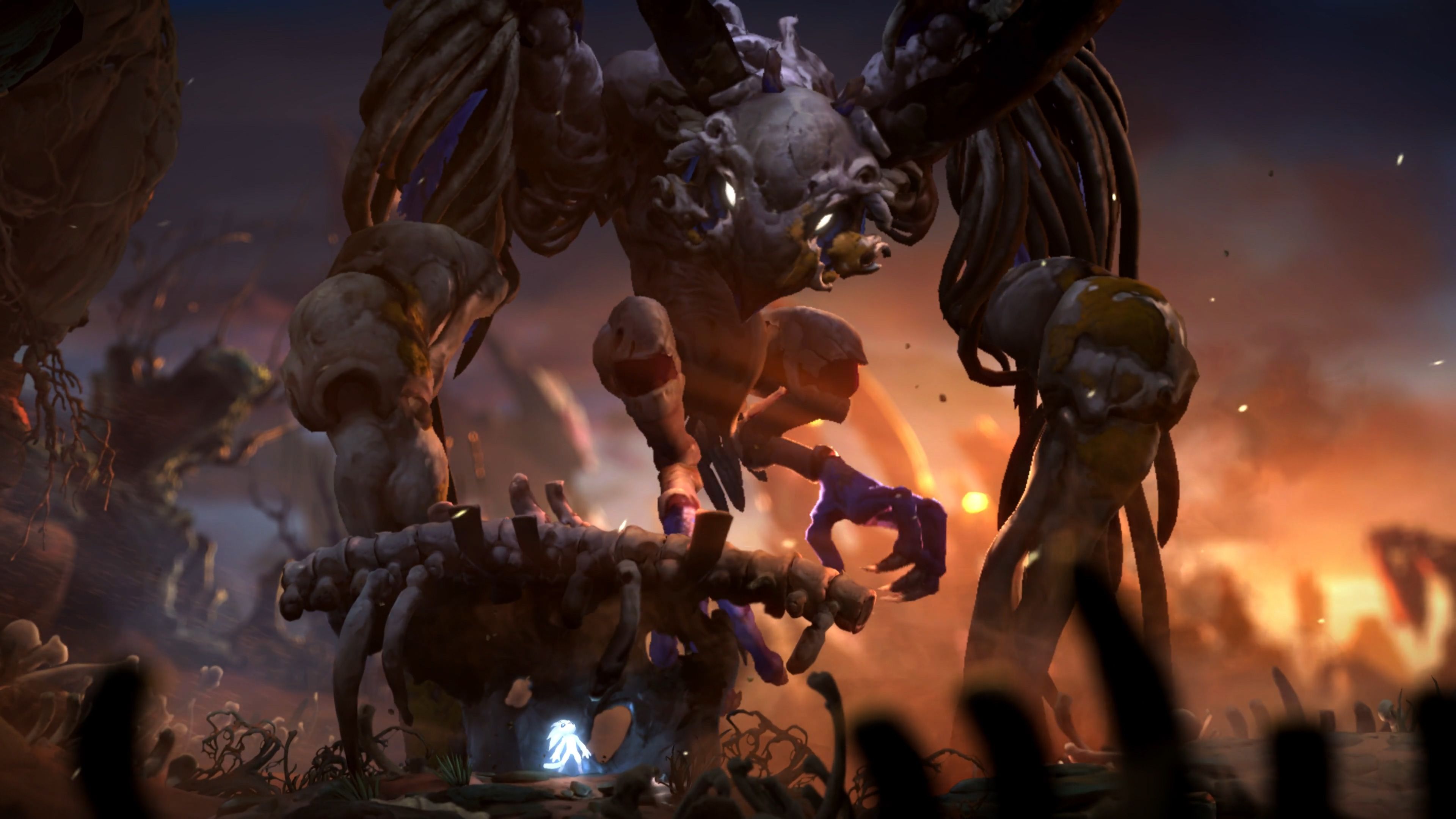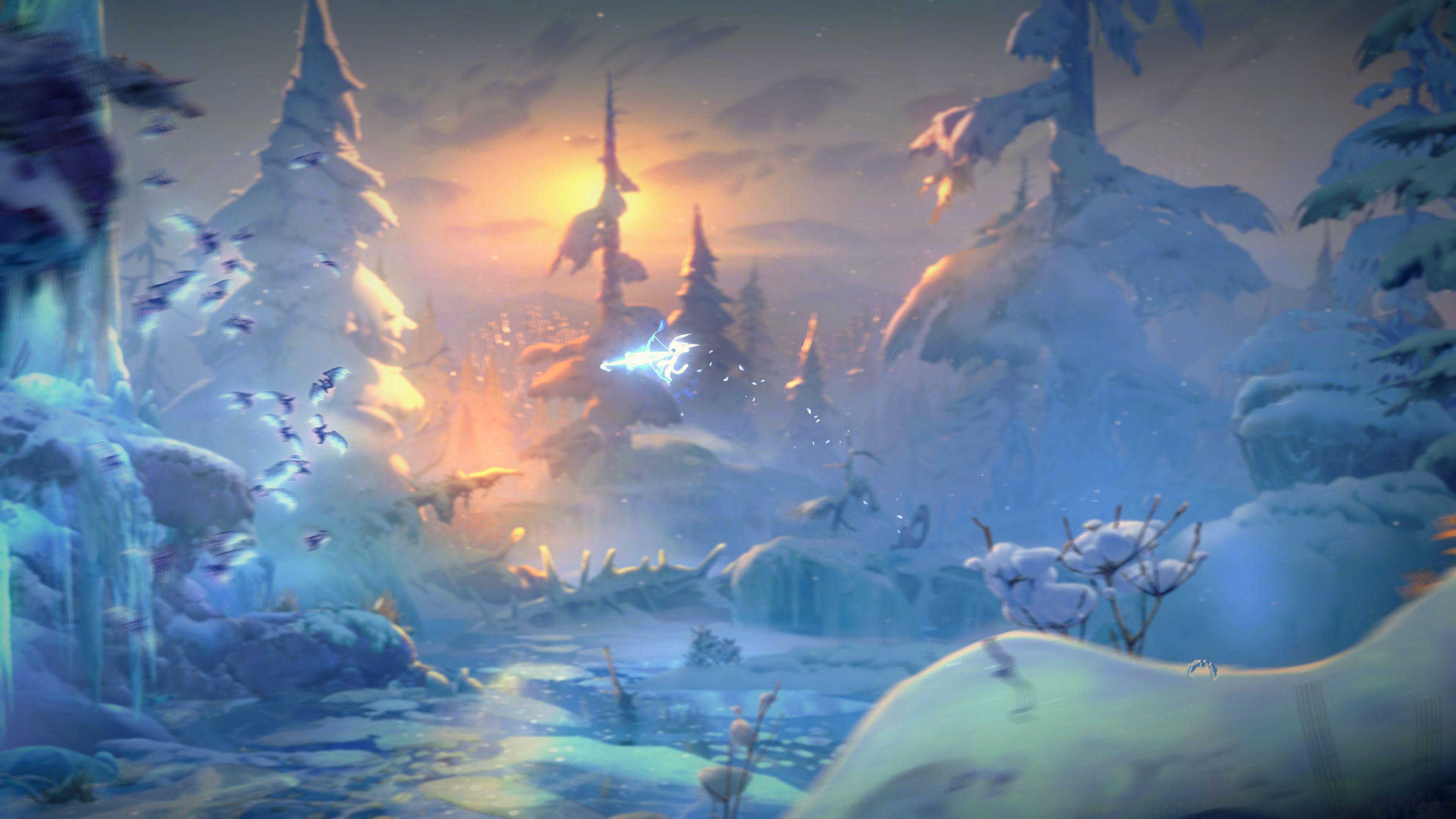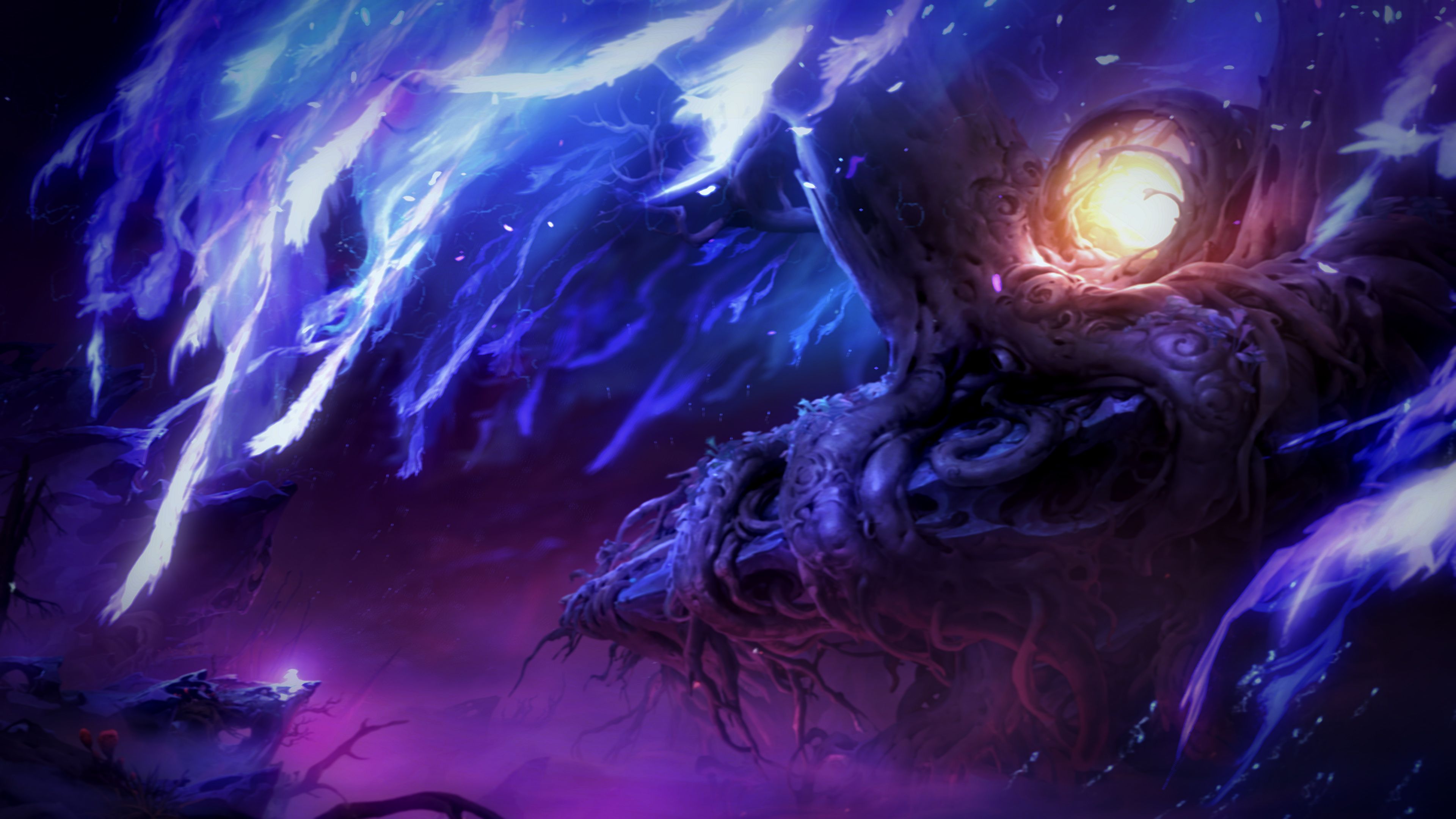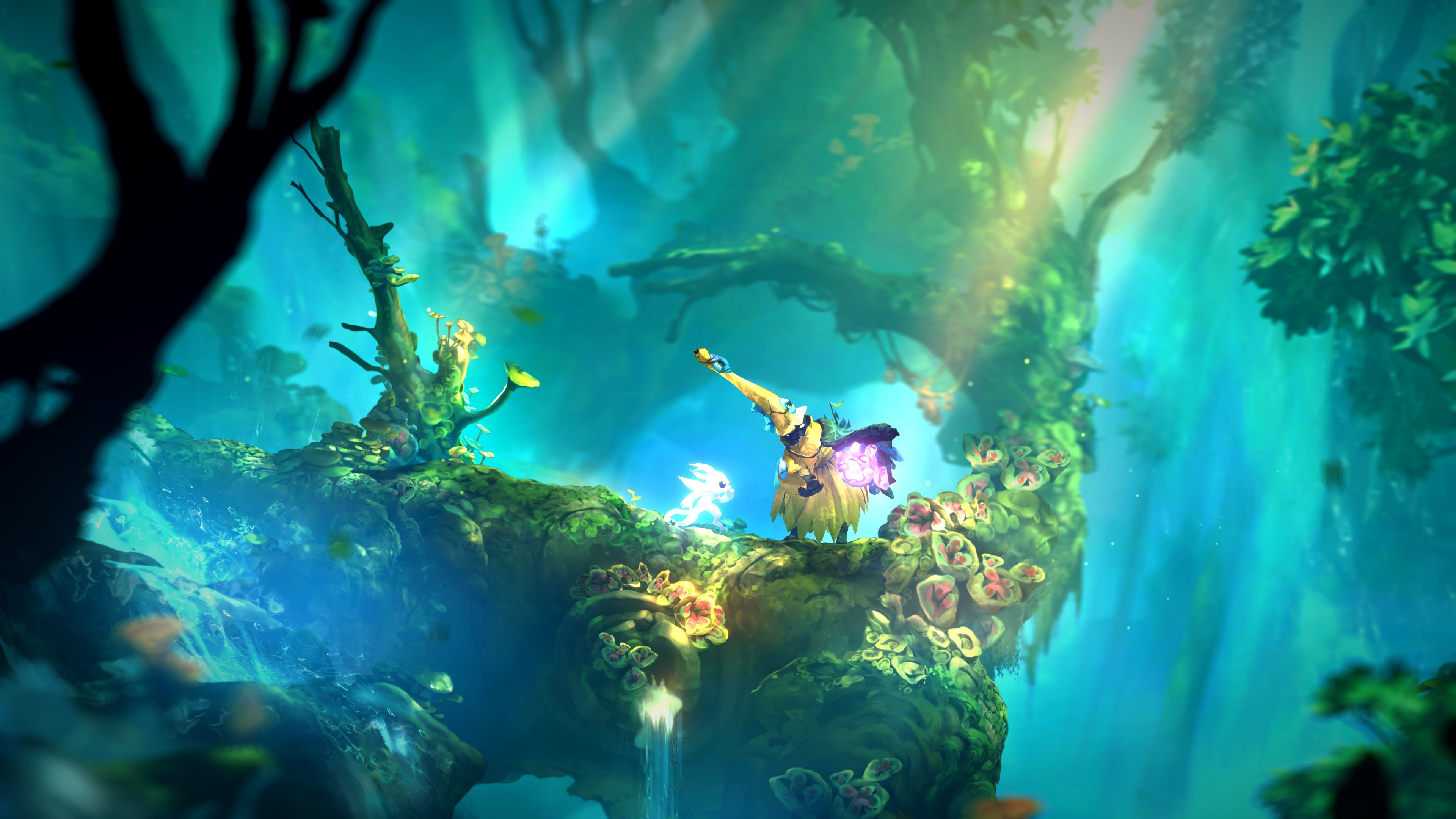Gennadiy Korol — co-founder and lead engineer at Moon Studios — explains that “Moon” isn’t just some arcane name resembling the ethereal mood of Ori and the Will of the Wisps’ visuals. It’s based on the iconic Kennedy speech from 1962 — specifically the line, “We choose to go to the Moon in this decade and do the other things, not because they are easy, but because they are hard.”
Ori has had a long — and hard — journey since Blind Forest launched in 2015. Despite quickly becoming beloved by players all over the world, the first Ori game sort of came about by accident. Inspired by the likes of Limbo and Braid, Korol and the team at Moon recognized an “indie revolution” dedicated to the “magic about old games.” And so they got to work on Warsoup, a first-person, real-time strategy multiplayer bonanza.
“At some point we were just bored,” Korol tells me. “The publisher process is super long, you’ve got to wait a lot, and we couldn’t just sit around doing nothing. So we built this really small prototype of a platformer because Super Meat Boy came out.” Korol thought this boredom-killer would take a few months max, because “games are easy.”
“Long story short, that little thing became Ori and the Blind Forest,” he explains. “The joke is on us — it seemed like a simple platformer we could do in six months, and obviously that took four years.”
This is where Moon discovered its own unique modus operandi for design. Korol says the studio tends to focus on core mechanics first. Although everyone there loves art and storytelling, and has developed a particular affinity for telling human stories via allegorical characters, it ultimately boils down to whether the person holding the controller is having fun or not.
“When we showed it to Microsoft, we were kind of arrogant about it,” Korol says. “We said, ‘Hey, we want to do something that feels as good as Super Meat Boy,’ and Microsoft told us this story later that they got this email and were like, ‘Yeah, yeah, another bunch of indie guys that wanna do [Super Meat Boy].’” But Moon impressed, and soon this small prototype designed as a secondary passion project had backing from one of the most colossal tech giants on the planet.
“The foundation of any good game has to be that it’s fun to interact with, it’s fun to do whatever the core of the game is,” Korol says, speaking to Moon’s outlook on designing Ori. “If that’s not there, you can’t really compensate with pretty art and story — but if you have a great core experience, you can multiply and amplify great gameplay with beautiful art and beautiful story. We were really inspired by Studio Ghibli. Spirited Away, Princess Mononoke, that kind of art style and worldbuilding. For storytelling, we grew up with things like The Lion King, and all of the Miyazaki movies.”
This was the approach to Blind Forest, and clearly it worked. But Blind Forest had been its own thing that accidentally came into being off the back of a ditched first-person RTS. Moon wasn't even sure it needed a sequel, let alone if it actually wanted to do one.
“Will of the Wisps was quite interesting,” Korol says. “For us it wasn’t about a safe thing. For a long time a lot of us didn’t really want to make Ori 2, because for us it was like, ‘Dude you worked on this project for five years, now it’s time for something new.’
“The way we pitched this to Microsoft was, ‘If we’re doing Ori 2, we want to take what we have with Ori and absolutely push it in every single way.’ It had to be better in every single regard. And that was the challenge: how do you take a game that was beloved by a lot of people and still holds up visually and in terms of gameplay — how do you make it feel familiar, but at the same time make it feel fresh, new, and better?
“It’s more upbeat, it’s more fresh, and hopefully doesn’t feel like we just did more of the same. That’s why we don’t like sequels, they feel like the developer is afraid to take risks because the formula works. But then the other end of that is if you don’t take some risks then it feels like more of the same, it doesn’t feel like a new game.”
One of the most obvious risky differences between Ori and Ori 2 is the latter’s emphasis on combat. Korol notes that this was something people brought up about the inaugural game — although Moon intentionally designed Blind Forest to elevate platforming, meaning other aspects took a backseat, players were interested in what a full-fledged Ori combat system could look like. As Korol says, combat in the first game isn’t bad. But what if it was experimented with, iterated on, and completely transformed into a whole new system?
“It felt like there was an opportunity for the second one,” says Korol. “Not a lot of metroidvanias have done a nice combat loop that’s actually engaging and has some depth in it. Another funny thing: Hollow Knight. A lot of people go, ‘Oh yeah, you took inspiration from Hollow Knight.’ Actually, we had the design document for most of the features people would associate with Hollow Knight in Ori 2 way before they even showed their first trailer. We actually had the prototype of the sword in the first game. We had a working version of sword fighting in Blind Forest, but it was very hard to make it work. It was such a big game and we needed to ship it at some point.”
And so Ori’s sword was left on the cutting floor, where it could easily be located at the very beginning of development for Ori 2. As well as focusing on how to implement decent sword fighting, Moon looked at systems from other games for inspiration — Korol notes that one of the most prominent cases of this had to do with studying the materia system in Final Fantasy.
In the first Ori game, skills were obtained from a tree — however, this tree had a range of distinct paths, all of which were exclusive to their own natural trajectories. “It created an interesting dynamic that we wanted to make more free [in Ori 2],” says Korol. ”We wanted to make it fast so you could dynamically change these things very quickly. That’s why we came up with the equipment wheel where on the fly you can reassign weapons based on your situation.
“Perfecting that balance and really knowing, ‘if you take this ability and add that ability’ is like rock paper scissors but scaled to the nth degree. You want to make something that feels like players have tools to use, but it’s [also] fun for them to figure out which tool they want to use when.” The materia system led to Ori 2’s use of shards, which affect the ways in which mobility and combat skills are reconciled with one another, and ultimately determines your ever-rotating loadout that makes any skillset possible at any given time.
This level of thoughtfulness wasn’t just exclusively reserved for an impending combat overhaul, though. A lot of what Ori 2 became originated in what Ori couldn’t be. As well as wanting a sword in the original game, Moon wanted a diverse cast of NPCs. “But when you’re such a small team, how do you animate and program all of that?” asks Korol. “So, we went in the direction where the world feels more desolate and empty intentionally. It makes you feel something, it has a certain mood and strikes a certain tone. And it was also just a reality of production, we couldn’t just populate the world with all of these NPCs with backstories and quests.” At the time, Moon was only about 20 employees strong.
“Once we had the chance in Ori 2 we just said that’s going to be the first thing we do, come up with a nice cast of characters, build backstories for all of them, try to tie it all together in a world that makes sense,” Korol explains. “Visually it [does] make sense. Everything is contextualized nicely, and you don’t break the immersion too much with stupid gamey things.”
According to Korol, there are still a bunch of ideas that didn’t make the cut. Although he says there are no plans for a new Ori game just yet — he specifically says “maybe if we do the next one…” — a lot of concepts fell by the wayside prior to shipping the game, both for practical and qualitative reasons.
“Sometimes you have to ask yourself if cost is no object and you have infinite budget, is it the right thing to have in this game?” Korol says. “Or do you want to have a tighter, more lean package that is better ultimately.
“We had to decide at some point what the scope is, what makes this a tight package that has enough things for people to have a lot of fun but is also reasonable enough for us to actually go and make. More is not better. That’s the kind of thing that people sometimes get wrong, they try to cram more and more features into the game and they overwhelm the player. We had a lot of tests for the environments, we had some ideas for extra story stuff, ideas for extra abilities, but ultimately it just wasn’t good enough, or we didn’t feel like it would make the game better as opposed to just taking what we had and really going deep with it.”
It’s worth noting that the remaining world in Ori and the Will of the Wisps is remarkably intricate, largely thanks to its implementation of backtracking. Although it’s ostensibly a 2D world, its depth transcends visual dimensions in that the map is actually several levels superimposed on top of one another, and yet everything is seamlessly connected at the same time — literally. Ori has no loading screens and the camera moves throughout the entire world in one smooth motion. This is where Ori’s abilities truly come into play, because their interdependent relationship with the environments you traverse as part of your aerial, obstacle-coursing antics becomes strikingly clear.
“This is kind of my pet peeve,” Korol says. “A lot of people say, ‘oh it’s a 2D game, it’s easy,’ and I would actually go and say in some ways it’s a lot easier to make a 3D game that just has a linear flow. You don’t have all of those constraints — here you have a puzzle, you have so many things you’re solving for at the same time.
“You build this metroidvania maze where you have backtracking, so you have to build a movement puzzle that goes in multiple directions and flows. Then you create these opportunities for introducing new abilities. We actually tease the new ability before we introduce it, then after we introduce it we teach it and then you escalate the challenge so the player thinks they’re getting better at the game. Now it’s about chaining all of these abilities together to create combat and movement patterns. The depth comes from not only having one cool ability, but having five of them, or ten, and being able to combine those things together in your own way. It becomes an expression of you as a player.”
This extends to the environments themselves, too. While new abilities are ultimately what allow you to reach previously inaccessible levels of play, each individual region in Ori has its own distinct visuals, gameplay themes, and physics. The idea is that yes, you have new abilities — but also, this is a new environment, and your abilities can only get you so far. You also need to learn the rules of how each area works in order to use your mobility in an effective and efficient way. It’s not just mechanics — there’s a whole lot of environmental readability necessary for getting the most out of the world, too.
Naturally, all of this amounts to quite an impressive package — something that is actively inhibiting when it comes to porting to Switch, which is what Moon recently did with Will of the Wisps. “The way we approached this port, you need to be excellent at optimizing every single line of code, every single shader, every piece of memory,” Korol says. “We had to re-envision how the game was put together. You look at optimization as art and think about it from outside of the box. What if we could take the game apart and put it back together slightly differently, and it would still look good but it would be much more efficient for all platforms. That’s a combination of engineering as art optimization, paired with hardcore ‘let’s optimize every line of code and look at the memory with a magnifyng glass.’”
As Korol says, a lot of the team didn’t think it was possible. From Ori’s high-resolution graphics to its seamlessly connected and simultaneously rendered world, to the simple fact that the Switch has a variety of bottlenecks that impede clean ports, some people wanted to settle for 30fps. It’s a weak console, players would understand the compromise — but to tie it back to the introduction of this piece, that’s not what Moon is about. Moon is about doing things not because they’re easy, but precisely because they aren’t.
“It’s cool to do things that some people would say are impossible,” Korol says. “You want to see if you can actually do it. And it really pushes you in a cool way. That’s what happened with this port — it’s definitely not been us being in our comfort zone.
“Hopefully people go, ‘I don’t know how they did that,’” Korol adds. “That’s when it feels like it was worth it.”

